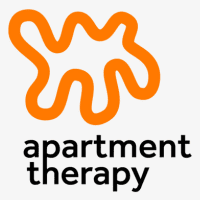Look, every parent wants their kid to breeze through school, but sometimes those reading lessons get…tricky. As a former teacher, I’ve seen the frustration and worry in parents’ eyes when their bright kid just can’t seem to “get” reading. If that sounds like you, let’s unpack what dyslexia really is and what to look out for.
Table of Contents
Dyslexia: It’s Not About Being “Slow”
Dyslexia isn’t about how smart a kid is – it’s about how their brain processes sounds and letters. Picture those symbols as a foreign language. Kids with dyslexia work SO hard to translate it, but the connection isn’t automatic. That’s why reading feels exhausting for them.
Spotting the Signs (Around Age 7)
Second and third grades are a big shift! Suddenly, kids are meant to read smoothly, not just decode. Here’s where dyslexia starts to stand out:
- Sounding Words Out is a Struggle: It’s like every word is a puzzle, even familiar ones. They might guess based on the picture instead of really reading.
- Letter Mix-Ups Stick Around: Those ‘b’s and ‘d’s still flip-flop, numbers get reversed… even with practice, it’s like their brain won’t remember the right way.
- Reading is Hard Work: It’s halting, not flowing. They might lose their place, reread lines, or sound out every single word, even the little ones.
- Missing the Little Helpers: They skip over words like “and” or “of” – those are tricky for dyslexic brains to catch.
- Spelling is a Wild Guessing Game: Even simple words they practice end up jumbled. They might make the same errors repeatedly, no matter how hard they try.
- Forgetful, Even About Basics: It’s not laziness! Their memory can be spotty, like those sight words or math facts just won’t stick long-term.
Read: How Trauma Affects Kids in School and the Best Ways to Help Them
Important: These signs are clues, not a guarantee. And every dyslexic kid is different. If things feel off, trust your instincts!

When ADHD is in the Mix
Sometimes focus issues go hand-in-hand with reading struggles. A kid with ADHD might be super fidgety and have trouble with reading, making it doubly tough. An evaluation is key to sorting out what kind of help is needed.
Early Help is a Game-Changer
Getting the word “dyslexia” might feel scary, but I promise, it’s the start of something good. Dyslexic brains can be taught to read in ways that work for them! It protects their confidence, too – they realize they’re not “dumb,” just learn differently.
Read: How Sports Can Benefit Your Child’s Mentality
Where to Start:
- Your Partner in Crime: Your child’s teacher! They see your kid every day and may have noticed the same things. Start the conversation there.
- Finding the Right Specialist: If school resources aren’t enough, seek out an educational psychologist or dyslexia expert. They’ll map out your child’s strengths and those tricky spots.
- You’re Not Alone: Groups like the International Dyslexia Association are lifelines! Connect with other parents, get resources, find that “it gets better” reassurance.
Read: What to Do When Your Child is Aggressive
The Biggest Thing to Remember
This journey has ups and downs, but you’re already doing the most important thing: noticing and caring. With support (and a good dose of patience!), dyslexic kids become amazing readers and learners. But more importantly, they know they have a parent who believes in them – that’s priceless.
Tell Me: Have you been through this with your own child? What’s one piece of advice you’d give to a parent just starting out?













